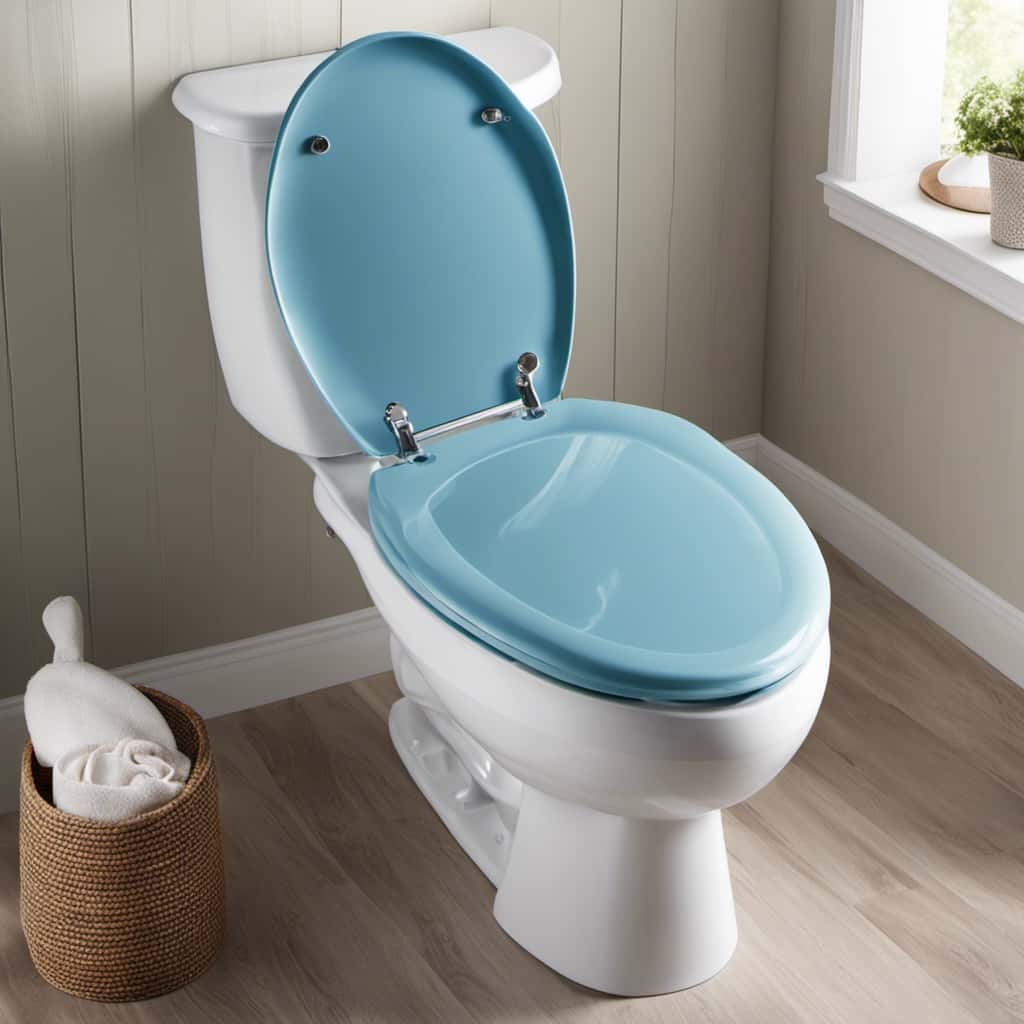Here’s how we tackle the challenge of flushing a toilet with frozen water pipes.
When faced with this predicament, it’s crucial to identify the frozen pipes and then thaw them out.
We’ll also explore alternative water sources for flushing, as well as the option of using hot water.
Lastly, we’ll discuss preventive measures to avoid frozen pipes in the future.
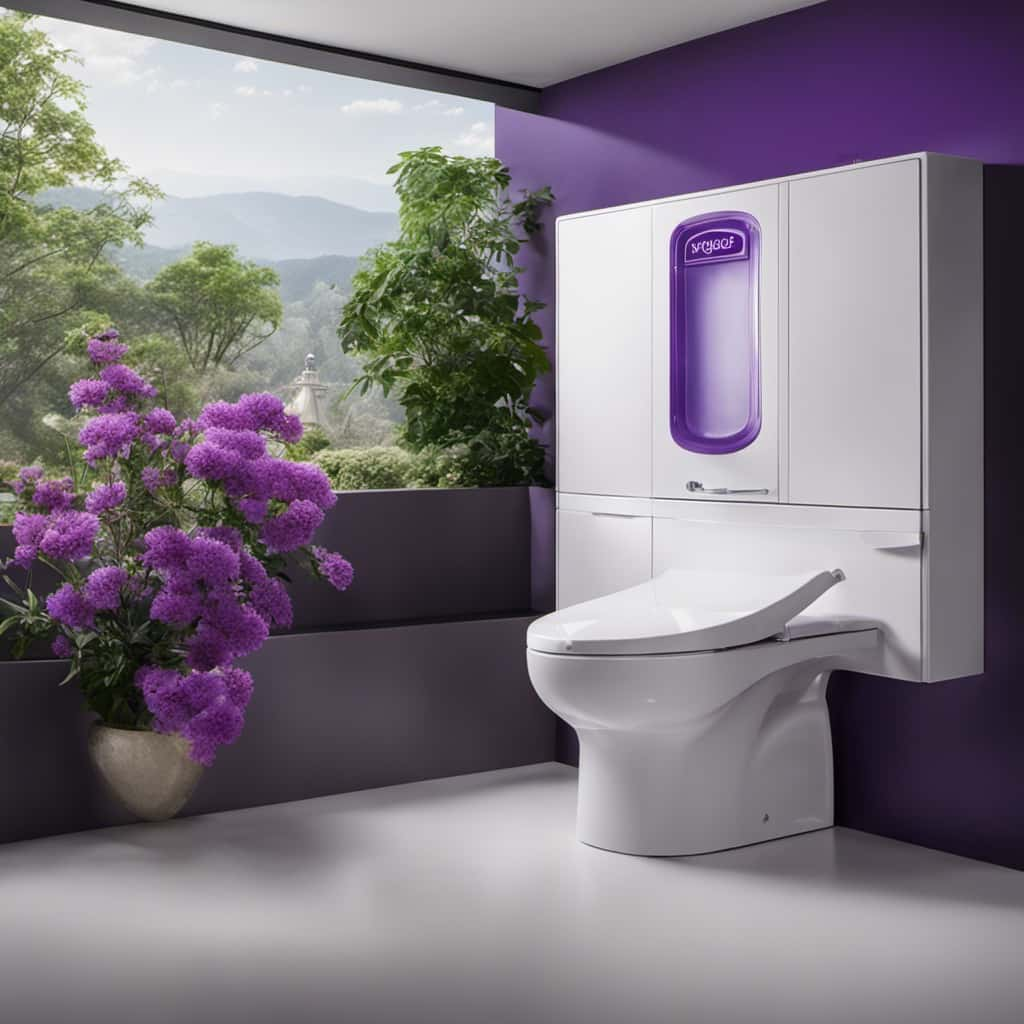
Stay tuned for expert guidance on mastering the art of flushing during frozen pipe woes.
Key Takeaways
- Thawing techniques such as using a hairdryer or heat gun can be used to apply gentle heat directly to the frozen area.
- Alternative water sources like rainwater collection or melted snow can be used for flushing during frozen pipe situations.
- Hot water can be used to flush the toilet, but it should be used in moderation to prevent damage to the plumbing.
- Preventing frozen water pipes in the future can be achieved by insulating exposed pipes, sealing gaps and cracks near pipes, and using heat tape or cables to keep pipes warm during freezing temperatures.
Identifying the Frozen Water Pipes
To identify the frozen water pipes, we need to start by checking the areas around the main water supply valve. Insulating pipes is an effective way to prevent them from freezing, but if they do freeze, it’s important to act quickly.
Signs of frozen pipes include a lack of water flow or low water pressure, especially during cold weather. Another indication is frost or ice buildup on the pipes.
If you suspect frozen pipes, it’s crucial to locate the affected areas. Start by inspecting unheated areas of your home, such as basements, crawl spaces, or attics. Look for visible signs of frozen pipes, such as bulging or cracked pipes. It’s also helpful to feel the pipes for a noticeable drop in temperature.
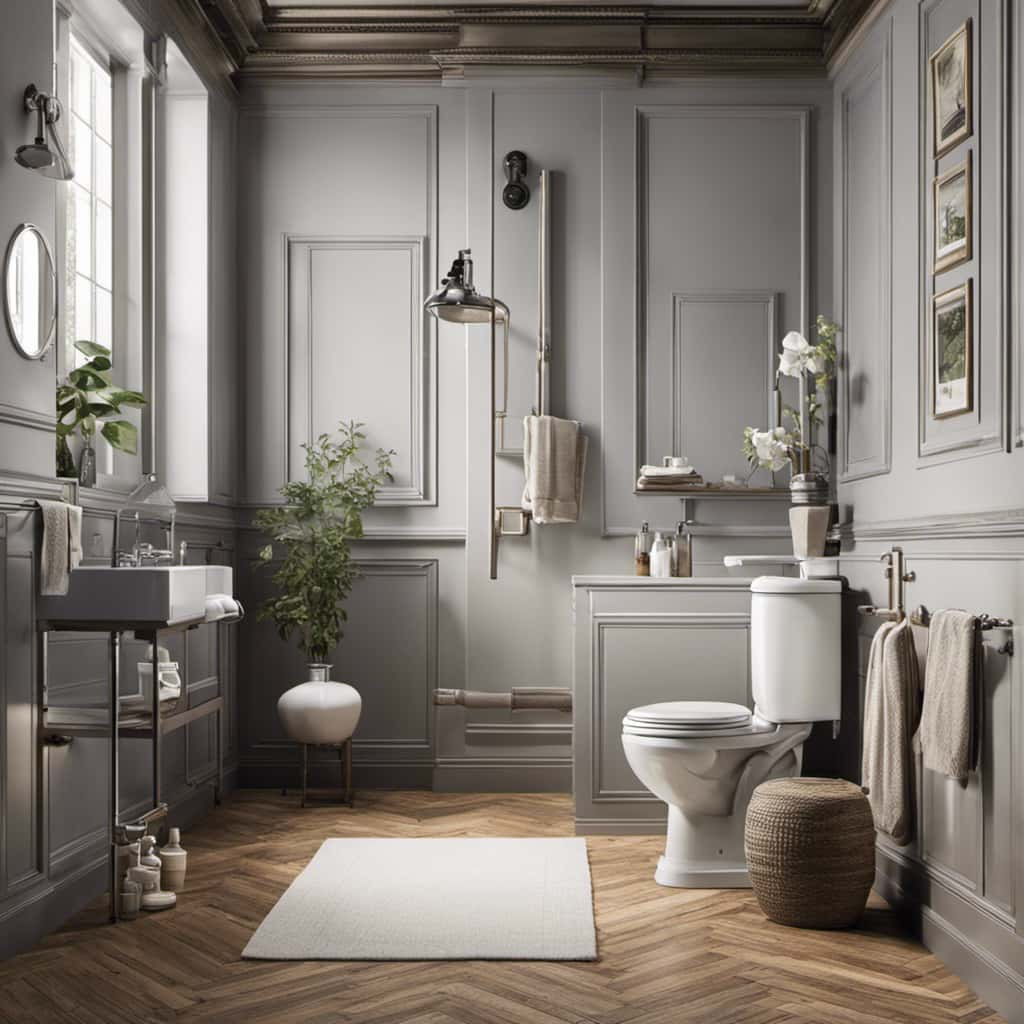
Identifying the frozen water pipes early on will allow for prompt action to prevent further damage.
Thawing the Frozen Water Pipes
Now, let’s focus on how we can thaw the frozen water pipes.
Thawing techniques can vary depending on the severity of the freeze and the location of the pipes.
One common cause of frozen pipes is exposure to extremely cold temperatures.
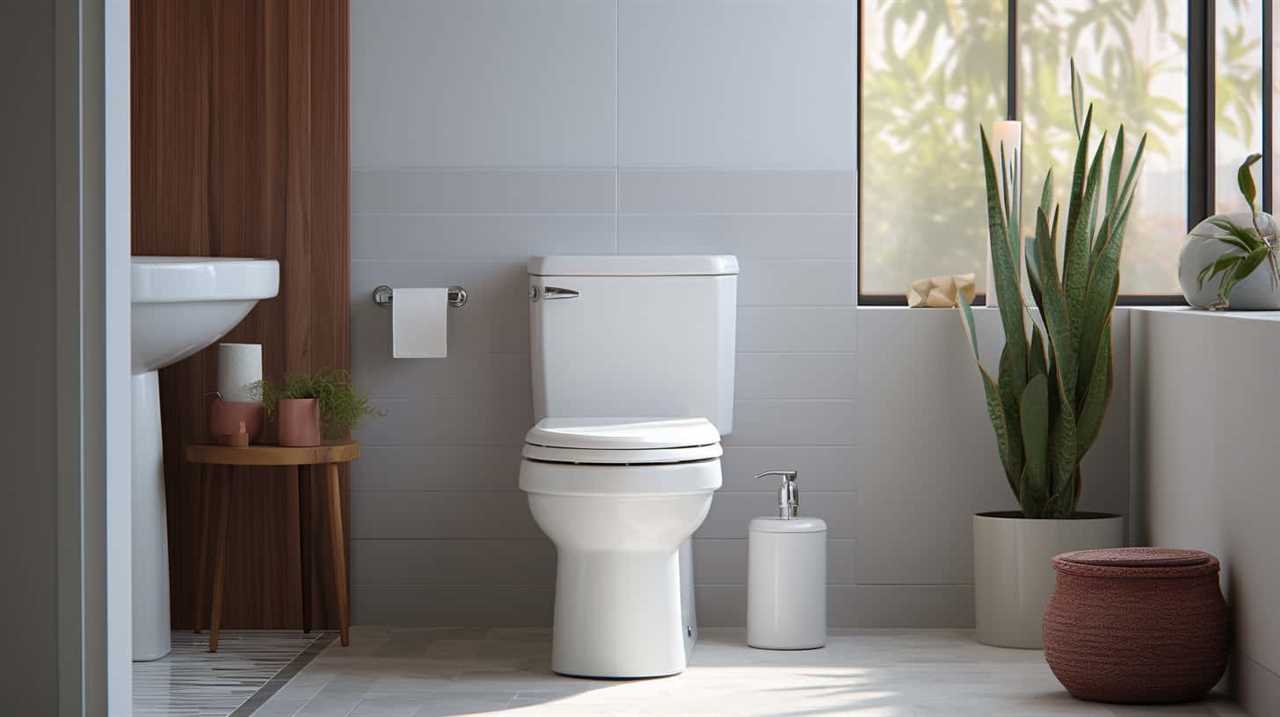
To thaw the pipes, you can use a hairdryer or heat gun to apply gentle heat directly to the frozen area.
Another method is to wrap the pipes in heating tape or use heat lamps to slowly raise the temperature.
It’s important to avoid using open flames or excessive heat, as this can damage the pipes.
Additionally, opening faucets and allowing a small flow of water can help expedite the thawing process.
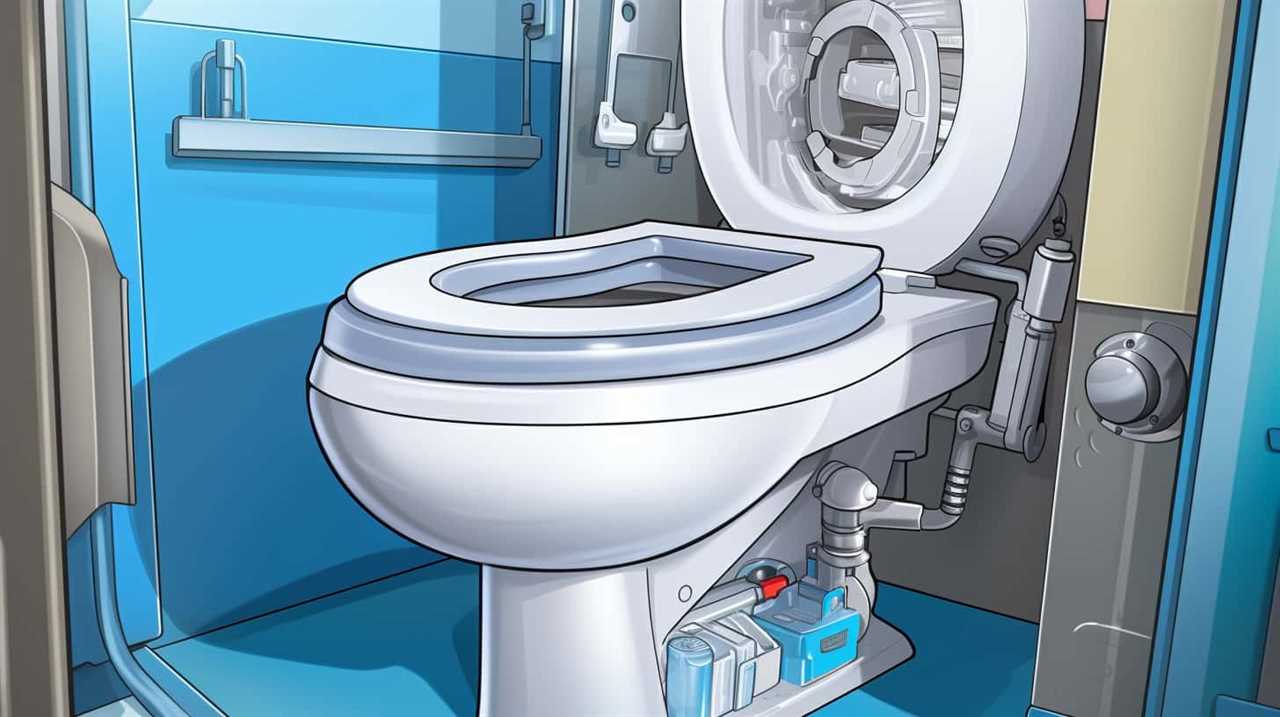
Remember to be patient and monitor the pipes closely during thawing to prevent any further damage.
Alternative Water Sources for Flushing
When dealing with frozen water pipes, we may need to explore alternative water sources for flushing. In situations where the water supply is unavailable due to frozen pipes, there are two primary options for obtaining water for flushing purposes: rainwater collection and using melted snow.
Rainwater collection involves capturing and storing rainwater for later use. This can be done by installing a rain barrel or a more complex rainwater harvesting system. It’s important to ensure that the collected rainwater is filtered and treated before using it for flushing.
Using melted snow is another viable option. Snow can be melted using a heat source such as a stove or a portable heater. However, it’s crucial to filter and purify the melted snow to remove any impurities or contaminants before using it for flushing.

Using Hot Water to Flush the Toilet
One effective method we’ve found for flushing a toilet with frozen water pipes is by using hot water. However, it’s important to take hot water safety precautions to avoid any accidents or injuries. Before attempting this method, ensure that the hot water supply is functioning properly and the temperature isn’t too high. Use caution when handling hot water to prevent burns.
It is also crucial to consider the effects of hot water on toilet plumbing. Hot water can cause the pipes to expand, which may help melt the ice blockage and restore water flow. However, excessive heat can also damage the plumbing system, leading to leaks or bursts. Therefore, it’s recommended to use hot water in moderation and monitor the plumbing closely for any signs of damage.
If you’re unsure or uncomfortable with this method, it’s best to consult a professional plumber.
Preventing Frozen Water Pipes in the Future
To prevent frozen water pipes in the future, we should take proactive measures by insulating exposed pipes and keeping them heated. Here are three important steps to prevent burst pipes and ensure the proper insulation of water pipes:

- Insulate pipes: Use pipe insulation sleeves or wrap exposed pipes with insulation tape to protect them from extreme cold temperatures. Insulation helps to maintain the heat within the pipes and prevents freezing.
- Seal gaps and cracks: Identify any gaps or cracks near the pipes and seal them with insulation foam or caulk. This will prevent cold air from reaching the pipes and reduce the risk of freezing.
- Keep pipes heated: Consider using heat tape or heat cables to keep pipes warm during freezing temperatures. These devices provide a consistent source of heat to prevent freezing.
Frequently Asked Questions
What Are the Signs That Indicate Frozen Water Pipes in a Toilet?
Signs of frozen water pipes in a toilet include a lack of water flow, low water pressure, and unusual noises. To prevent frozen pipes, insulate the toilet tank and pipes, keep the room heated, and let faucets drip.
Can I Still Use the Toilet if the Water Pipes Are Frozen?
If the water pipes are frozen, we can’t flush the toilet. However, there are alternative solutions, such as using buckets of water. If the issue persists, it’s best to call emergency plumbing services.
Are There Any Safety Precautions I Should Take While Thawing Frozen Water Pipes?
When thawing frozen water pipes, we should take safety precautions to prevent pipe damage. Some recommended thawing methods include using heat lamps or hair dryers. Always make sure to follow proper procedures and avoid using open flames or excessive force.
What Are Some Alternative Methods to Flush the Toilet When Water Pipes Are Frozen?
When water pipes are frozen, alternative methods for flushing the toilet become necessary. In an emergency situation, we found that using a bucket of water poured directly into the toilet bowl can provide a temporary solution.

How Long Does It Typically Take to Thaw Frozen Water Pipes in a Toilet?
Thawing frozen water pipes in a toilet typically takes a varying amount of time depending on the severity of the freeze. Thawing methods like using a hairdryer, heat tape, or a space heater can expedite the process.
Conclusion
In conclusion, when faced with frozen water pipes and the need to flush a toilet, it’s important to first identify the frozen pipes and then safely thaw them using various methods.
If no immediate solution is available, alternative water sources can be used for flushing.
However, it’s crucial to take preventive measures to avoid future freezing of water pipes.

By following these steps, you can effectively deal with the issue and ensure a functional toilet even during freezing temperatures.

